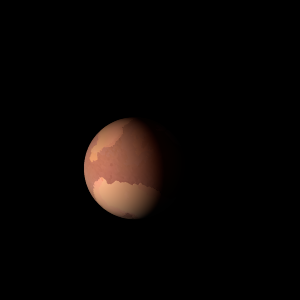|
|
Space Astro
|
Info for exoplanet "Hiyohe"
| Scientific (actual) data |
|---|
| Name | Kepler-399 d |
| Planet status | Confirmed |
| Radius | 0.169 |
| Orbital period | 58.0346 |
| Semi major axis | 0.261 |
| Discovered | 2014 |
| Updated | 2021-02-05 |
| Tconj | 2454970 |
| Impact parameter | 0.19 |
| Publication | Announced on a website |
| Detection type | Primary Transit |
| Alternate names | 2MASS J19580041+4040148 d, K02707.01, KIC 5480640 d, KOI-2707 d, KOI-2707.01, WISE J195800.41+404014.5 d |
| Star name | Kepler-399 |
| Right ascension | 299.5° |
| Declination | 40.67° |
| Mag j | 13.175 |
| Mag h | 12.779 |
| Mag k | 12.698 |
| Star distance | 1362.18 |
| Star metallicity | -0.827 |
| Star radius | 0.68 |
| Star temperature | 5502 |
| Star alternate names | 2MASS J19580041+4040148, KIC 5480640, KOI-2707, WISE J195800.41+404014.5 |
| Wikipedia article | Kepler-399 d |
Back
| |
| Fictional info (?) |
|---|
| Suggested name | Hiyohe |
| Planet type | Cold planet |
| It has the longest rotation period (445 days) of any planet in its solar system and rotates in the opposite direction to most other planets.
.
It was the one of the first exoplanets visited by a spacecraft, and one of the first to be successfully landed on. |
| Atmosphere | Nitric oxide | 59% |
| 2H2O | 22% |
| Xenon | 10% |
| Helium | 4.7% |
| Carbonyl sulfide | 4.3% |
| Atmospheric pressure | 80 bar |
 |
| No known satellites |
| Google search for Hiyohe |
|
Website by Joachim Michaelis
|
|
|
|